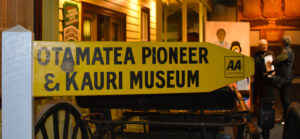
If you’re heading up to Northland, you need to visit the Kauri Museum in Matakohe. I went last weekend. In some ways, it’s a typical New Zealand settlers’ museum, but the Kauri Museum is unique. I was taking photos in the wake of a tour group, and I heard quite a few expressions of awe.
The kauri is a tree that’s native to New Zealand. It’s a rather special tree, being one of the largest, tallest and longest-living trees in the world. Of course, being so big, it’s a valuable commodity. Or, at least, it was.
The European appetite for kauri was so voracious that the species was brought to the brink of extinction. Today, it’s protected. The most impressive still-living kauri specimen is over two thousand years old, over fifty metres tall and a whopping thirteen metres around the trunk. It’s called Tāne Mahuta, Lord of the Forest, and I saw it when I was kid. It’s amazing.
As I found out at the Kauri Museum, however, its trunk is only half as thick as the one that belonged to the greatest kauri ever recorded.
Throughout the nineteenth century and well into the twentieth, European settlers and their descendants built their lives out of kauri. The museum contains stunning examples of kauri timber furniture, architecture and artwork. There’s even a bathtub you can climb into, modelled here by my fiancé, Tim.
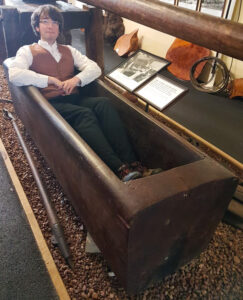
And it wasn’t just the wood that was valuable. The sap, known as kauri gum, was used for all sorts, both practical and aesthetic. The museum houses the most extensive collection of kauri gum artefacts in the world. Here are a few and, yes, even that wig is made from kauri gum.
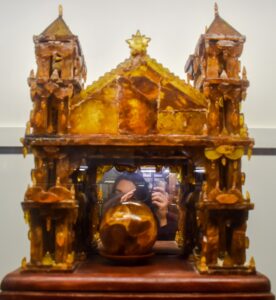

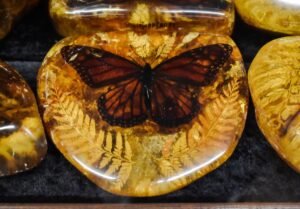
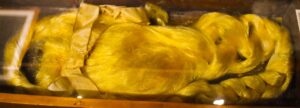
Naturally, felling such mighty trees was dangerous work. Some of the tools and pieces of machinery displayed in the museum are daunting.
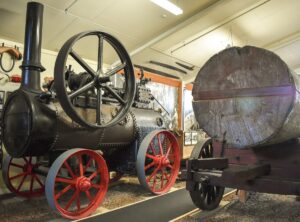
The experience of the settlers is expertly brought to life through life-sized dioramas and reconstructed buildings.
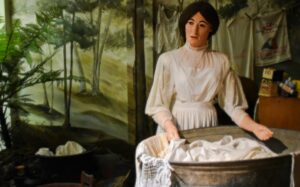
One of the best parts of the Kauri Museum is a turn-of-the-twentieth century boarding house.

If, like me, you’re into historical clothing, you’re in for a treat. When I was at there, on the upper floor of the boarding house, there was an exhibition of dresses, shoes and accessories.
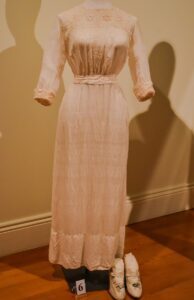
And I couldn’t resist posing next to an antique writing desk.
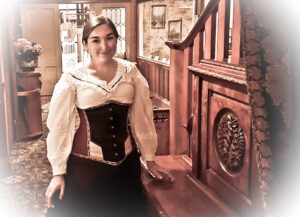
Like other New Zealand settlers’ museums, the Kauri Museum has some historical buildings you can explore. There’s a church, a post office and a school. In the single classroom, there’s a poster explaining the draconian rules that teachers (not children!) had to follow back then. I’ve seen similar things before, in a few different museums and historical villages, but the rules get me every time.
- You will NOT marry
- You are NOT to keep company with men
- You MUST be home between 8pm and 6am
- You MAY NOT loiter downtown in ice cream stores
- You MAY NOT travel beyond the city limits
- You MAY NOT ride in a carriage with any man
- You MAY NOT smoke
- You MAY NOT dress in bright colours
- You may UNDER NO CIRCUMSTANCES dye your hair
- You must wear AT LEAST two petticoats
- Your dresses must NOT be any shorter than two inches above the ankle
- You must start the fire at 7am so that the room will be warm by 8am
What with all that and giving the cane to children for such things as speaking their native language, I would NOT want to be a teacher in 1915!
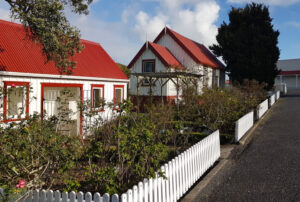
The Kauri Museum has a café and ample parking for campervans.
Article by Abigail Simpson, author of Poms Away: A British Immigrant’s View of New Zealand